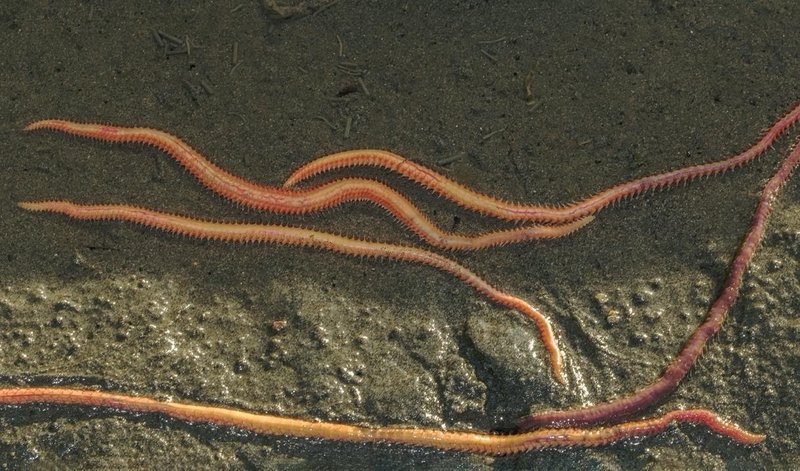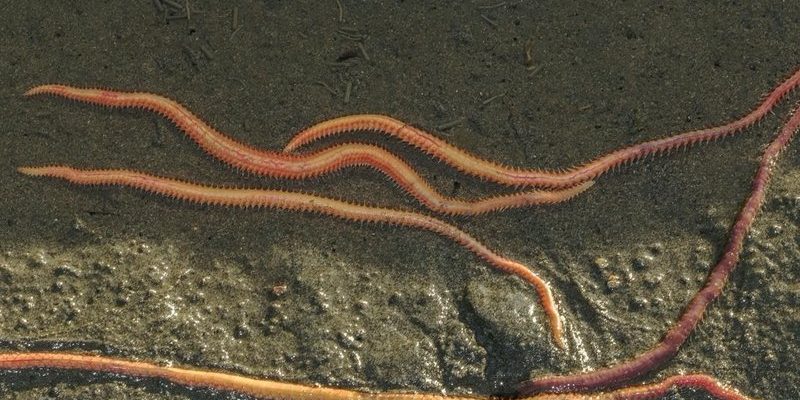
Bristle worms belong to a group called polychaetes, which are segmented marine worms known for their bristles or “chaetae” that line their bodies. They’re a vital part of marine ecosystems, contributing to nutrient cycling and serving as a food source for various predators. However, the question of whether they can adapt to **freshwater** or **brackish** environments opens a whole new can of worms—pun intended! In this article, we’ll explore the habitat requirements of bristle worms, their adaptability, and the possibilities of freshwater and brackish species.
The Natural Habitat of Bristle Worms
Bristle worms mainly thrive in **marine** ecosystems, where saltwater is a key component of their survival. They can be found in a variety of locations, from coral reefs to muddy seabeds. Marine environments are rich in nutrients, and bristle worms play an essential role in breaking down organic matter, which benefits the entire ecosystem.
You might be surprised to learn that there are over 10,000 species of bristle worms! Some of these species are highly specialized and may occupy specific niches within their environments. While most are content in salty waters, a few types, like the **Nereis**, show a certain level of adaptability to brackish waters. This means they can live in areas where seawater mixes with freshwater, like estuaries.
So, how do they manage in these environments? Well, bristle worms have specialized adaptations that help them cope with varying salinity levels. This adaptability is what keeps the bristle worm thriving in diverse marine conditions.
Understanding Freshwater and Brackish Environments
Before we jump into the possibility of bristle worms living in freshwater or brackish habitats, let’s clarify what these terms mean. **Freshwater** refers to water that has low concentrations of salts, such as rivers, lakes, and ponds. It’s essential for many organisms, including fish, amphibians, and various invertebrates.
**Brackish** water is a mix of fresh and saltwater. You can find brackish areas in places like estuaries where rivers meet the ocean or man-made structures like canals. These habitats often have a unique blend of life, and many organisms are specially adapted to thrive in this challenging environment.
Here’s the thing: while some marine species can tolerate brackish conditions, freshwater is a different story. The lower salinity level in freshwater can be lethal to many marine organisms, which leads us to question whether bristle worms could survive outside their salty homes.
Can Bristle Worms Survive in Freshwater?
The short answer? Not really. Most bristle worms are strictly marine and cannot survive in freshwater. The drastic difference in salinity affects their bodily functions. Since bristle worms are adapted to live in saltwater, they rely on the osmotic balance provided by their salty surroundings.
When placed in freshwater, these worms would struggle to maintain that balance. They would become permeable to the surrounding water, potentially leading to what’s known as *osmotic shock*. This condition ultimately leads to their demise as they cannot manage the rapid influx of water into their bodies.
That said, some species may show occasional tolerance to lower salinity levels, but it’s not common. If you’re considering keeping bristle worms in a freshwater aquarium, it’s best to explore other options, as they simply aren’t equipped for those conditions.
The Case for Brackish Bristle Worms
Now, let’s talk about **brackish** water. As mentioned before, some species of bristle worms can live in brackish habitats. These worms have evolved to handle variable salinity, which means they have a better chance of surviving in these unique environments compared to their strictly marine cousins.
Examples of brackish habitats where bristle worms might thrive include mangrove swamps and estuaries. In these places, the water can fluctuate between fresh and salty due to tidal changes and river flow. Some bristle worms can adapt to these conditions, but it’s essential to research specific species if you’re considering keeping them in a brackish aquarium.
When looking for brackish bristle worms, species like **Lumbrineris** are known for their ability to tolerate lower salinity levels. It’s a fascinating twist in the story of these worms; while they might not venture far into freshwater, brackish ecosystems offer them a home.
Setting Up a Brackish Habitat
If you’re intrigued by the idea of keeping brackish bristle worms, you’ll need to create the right environment. Here’s a quick breakdown of essential factors to consider:
- Salinity: Aim for a salinity level between 1.005 and 1.015 specific gravity for brackish conditions.
- Filtration: Good filtration is key. A sponge filter can help maintain water quality without sucking up your bristle worms.
- Substrate: Choose a sandy substrate, as these worms like to burrow and hide.
- Plants and Decor: Include plenty of hiding spots—think rocks and plants. This provides a comfortable and safe environment for your bristle worms.
Creating a suitable brackish environment can be rewarding. Just remember, the balance in your tank is essential. Routine testing of salinity and water quality will help maintain a healthy home for your bristle worms.
Common Challenges in Keeping Bristle Worms
Keeping bristle worms, especially in a brackish environment, comes with its challenges. Here are some issues you might encounter:
1. **Water Quality:** Maintaining the right salinity is crucial. Regular testing is vital to avoid drastic fluctuations that could harm your worms.
2. **Feeding:** Bristle worms are scavengers. They’ll thrive on a diet of sinking pellets, decomposing organic matter, and detritus. Make sure you provide enough food to keep them healthy.
3. **Compatibility:** If you plan to combine bristle worms with other tank mates, ensure they are compatible. Some species may not mix well, leading to conflicts.
Addressing these challenges requires diligence and care. However, with a little attention and research, you can successfully maintain bristle worms in a brackish habitat.
So, can you keep bristle worms in **freshwater**? Unfortunately, it’s a hard no for that one. Their adaptations are finely tuned for marine life, and they simply can’t handle fresh conditions. However, there’s still hope for those interested in these interesting creatures: brackish bristle worms can thrive in unique habitats where fresh and saltwater blend.
Creating a brackish tank can be a rewarding experience, especially if you’re looking to add some diversity to your aquatic life. With the right setup and regular maintenance, you might successfully care for these resilient little worms. If you’re diving into this project, remember to do thorough research on specific species to ensure you’re providing the best possible environment. Happy fish keeping!

